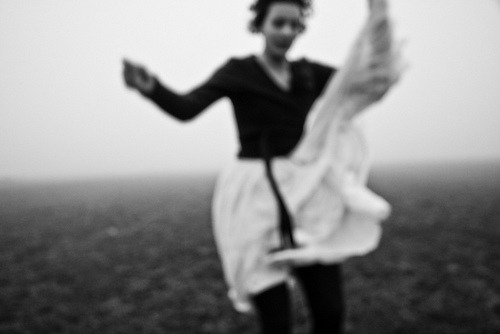
Posted on 06/20/2012 2:50:29 PM PDT by Red Badger
By synchronizing 98 tiny cameras in a single device, electrical engineers from Duke University and the University of Arizona have developed a prototype camera that can create images with unprecedented detail.
The camera's resolution is five times better than 20/20 human vision over a 120 degree horizontal field.
The new camera has the potential to capture up to 50 gigapixels of data, which is 50,000 megapixels. By comparison, most consumer cameras are capable of taking photographs with sizes ranging from 8 to 40 megapixels. Pixels are individual "dots" of data – the higher the number of pixels, the better resolution of the image.
The researchers believe that within five years, as the electronic components of the cameras become miniaturized and more efficient, the next generation of gigapixel cameras should be available to the general public.
Details of the new camera were published online in the journal Nature. The team's research was supported by the Defense Advanced Research Projects Agency (DARPA).
The camera was developed by a team led by David Brady, Michael J. Fitzpatrick Professor of Electric Engineering at Duke's Pratt School of Engineering, along with scientists from the University of Arizona, the University of California – San Diego, and Distant Focus Corp.
"Each one of the microcameras captures information from a specific area of the field of view," Brady said. "A computer processor essentially stitches all this information into a single highly detailed image. In many instances, the camera can capture images of things that photographers cannot see themselves but can then detect when the image is viewed later."
"The development of high-performance and low-cost microcamera optics and components has been the main challenge in our efforts to develop gigapixel cameras," Brady said. "While novel multiscale lens designs are essential, the primary barrier to ubiquitous high-pixel imaging turns out to be lower power and more compact integrated circuits, not the optics."
The software that combines the input from the microcameras was developed by an Arizona team led by Michael Gehm, assistant professor of electrical and computer engineering at the University of Arizona.
"Traditionally, one way of making better optics has been to add more glass elements, which increases complexity," Gehm said. "This isn't a problem just for imaging experts. Supercomputers face the same problem, with their ever more complicated processors, but at some point the complexity just saturates, and becomes cost-prohibitive."
"Our current approach, instead of making increasingly complex optics, is to come up with a massively parallel array of electronic elements," Gehm said. "A shared objective lens gathers light and routes it to the microcameras that surround it, just like a network computer hands out pieces to the individual work stations. Each gets a different view and works on their little piece of the problem. We arrange for some overlap, so we don't miss anything."
The prototype camera itself is two-and-half feet square and 20 inches deep. Interestingly, only about three percent of the camera is made of the optical elements, while the rest is made of the electronics and processors needed to assemble all the information gathered. Obviously, the researchers said, this is the area where additional work to miniaturize the electronics and increase their processing ability will make the camera more practical for everyday photographers.
"The camera is so large now because of the electronic control boards and the need to add components to keep it from overheating," Brady said, "As more efficient and compact electronics are developed, the age of hand-held gigapixel photography should follow."

Daguerreotype View of Cincinnati, taken in September 1848
http://www.codex99.com/photography/5.html
Of course, it was only monochrome.
What would make you think I don’t look creepy?
Big bruddah will be picking out faces half a mile away now!
It’s a Borg Cube!!!
BUT, will the camera fit on my phone.
So you’ve been to the Biloxi Wal-Mart?
Utilize them to record every person entering a Mosque nt he USofA. ... Aren’t told how ‘religious’ the mooselimb murderers are?
I'm laughing because I *have* been there. Nothing new under the sun, I'm afraid. When I was a kid, there were women in the Bay St. Louis Jitney Jungle that looked much the same.
One advantage to being older than dirt is that in a half hour I’ll have forgotten all about seeing your photos.

.....and a brain to process all that information that is smaller than the eye of a needle and runs on practically no energy at all..................
Check out the gigapxl project (www.gigapxl.org) for an approach using a custom-designed camera. A serious optics type rejecting the idea of splicing lots of images together in software.
More on the 1848 daguerrotypes of Cincinnati that ADemocratNoMore mentioned. Amazingly high resolution pictures from the olden days. Search Wired, “1848 Daguerrotypes Bring Middle America’s Past to Life”
That “camera” looks like it came from Hellraiser, and Doc could pass for a xenobyte with a little makeup.
A 50Gb Tiff file? Finally a reason for two 6 core processors and 96 Gigs of ram. You’d need a 128gb PCIE-SSD for a scratch file.
Still to big to fit inside my skull. Keep working on it boys.
I believe that Walmart is in Chicago.
Disclaimer: Opinions posted on Free Republic are those of the individual posters and do not necessarily represent the opinion of Free Republic or its management. All materials posted herein are protected by copyright law and the exemption for fair use of copyrighted works.